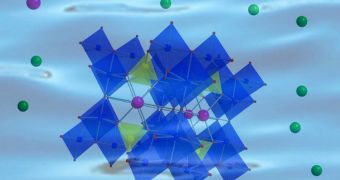A molecular sieve called crystalline silico-titanate (CST) was instrumental for cleaning wastewater contaminated with radioactive waste at the Fukushima Daiichi nuclear power plant, in Japan.
The technology was developed by experts at the US Department of Energy (DOE) Sandia National Laboratory (SNL), which is operated by Lockheed Martin. The facility licensed the technology to Honeywell company UOP LLC, which is now the sole CST manufacturer in the United States.
On March 11, 2011, a magnitude 9 earthquake and ensuing tsunami caused catastrophic damage at the Fukushima installation, making main and auxiliary power sources fail, and leading to the heating of four reactors, and the accumulation of hydrogen within the structures.
Eventually, explosions occurred at reactor #1, which was half destroyed. In the following weeks, Japanese emergency responders dumped 43 million gallons of water onto the four reactors, trying to prevent a nuclear meltdown of their cores.
After the situation was resolved, cleanup engineers had to treat the water in such a way that all highly volatile elements to be removed from radioactive wastewater. This is where CST played a critically important role in the effort.
“It’s the kind of thing that sends a chill. We’ve helped really make a difference in the world. These are the kinds of successes we want to see with all our intellectual property,” SNL Geochemistry Group Manager, Mark Rigali, explains.
“Sandia has a very important and longstanding business relationship with UOP. This is an opportunity to grow our partnership with the company,” explains SNL Intellectual Property Management, Alliances and Licensing Department official, Bianca Thayer.
CST was developed in the early 1990s, by Texas A&M chemical engineering professor Ray Anthony and late SNL chemist Bob Dosch. The material is based on the properties of a certain class of synthetic, microporous, aluminosilicate minerals called zeolites.
In tests conducted before CST had been widely used at Fukushima, this material performed a lot better at removing radioactive cesium from wastewater than any other chemical on the market at that time.

 14 DAY TRIAL //
14 DAY TRIAL //